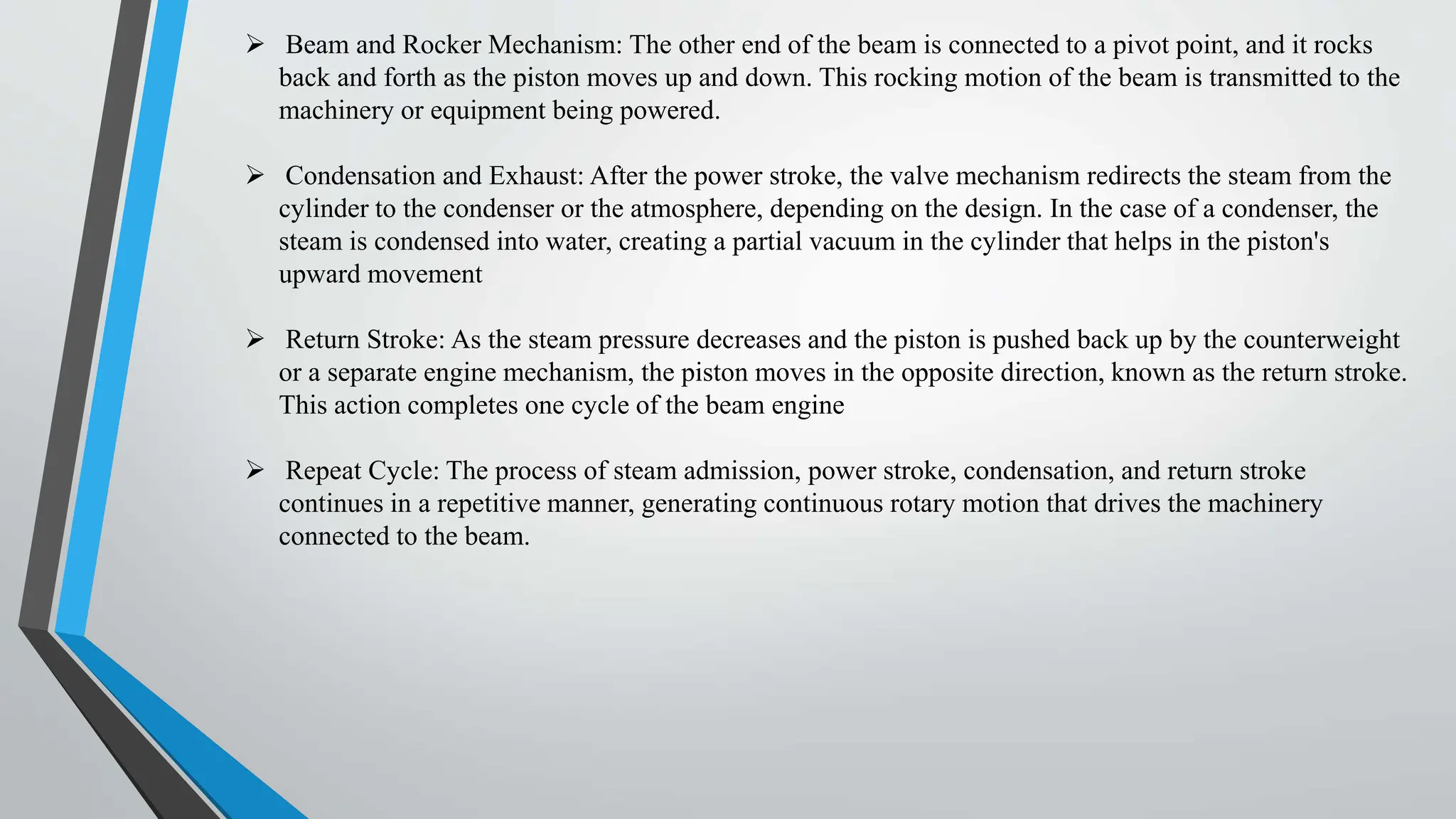Beam engines were widely used from the 18th to 19th centuries to power industrial machinery. They worked by using steam pressure on a piston connected to an overhead beam to produce reciprocating motion that was transmitted to pumps, mills, and other equipment. Key components included the steam cylinder, piston, connecting rod, beam, and rocker mechanism. Beam engines provided robust and reliable power for applications such as pumping water from mines, powering textile mills and factories, and supplying water to cities, though they also had disadvantages like low efficiency and large space requirements.










